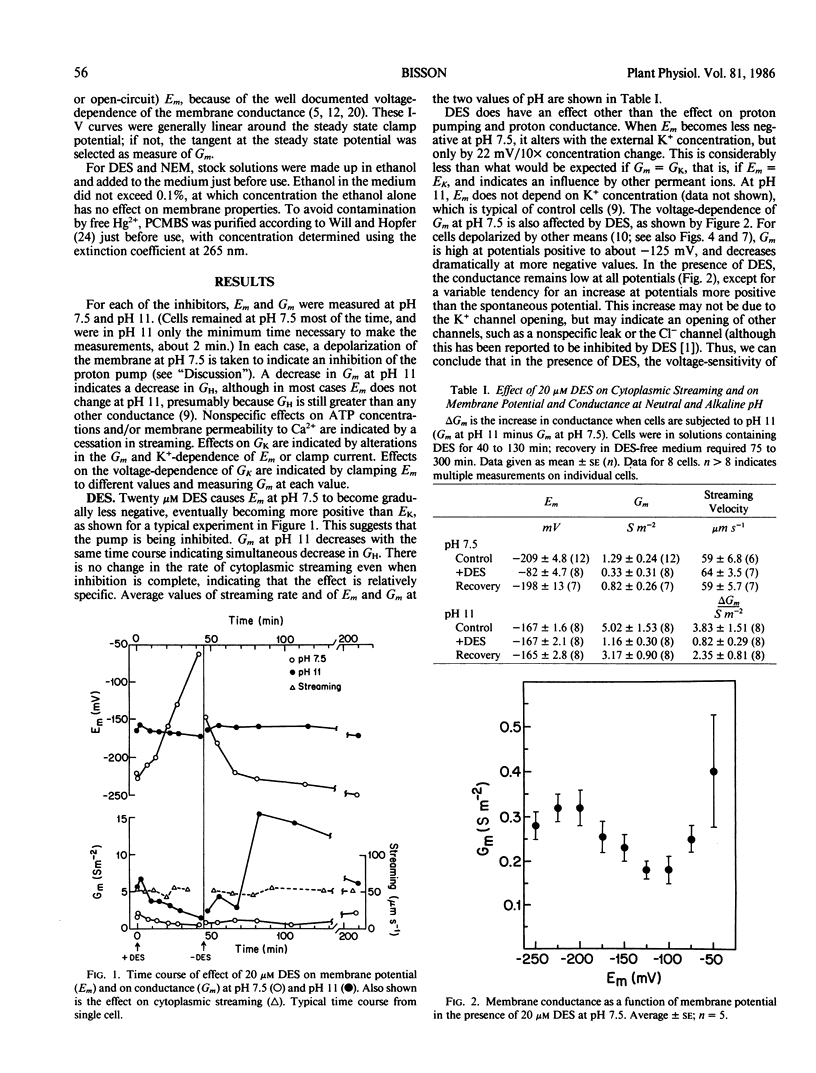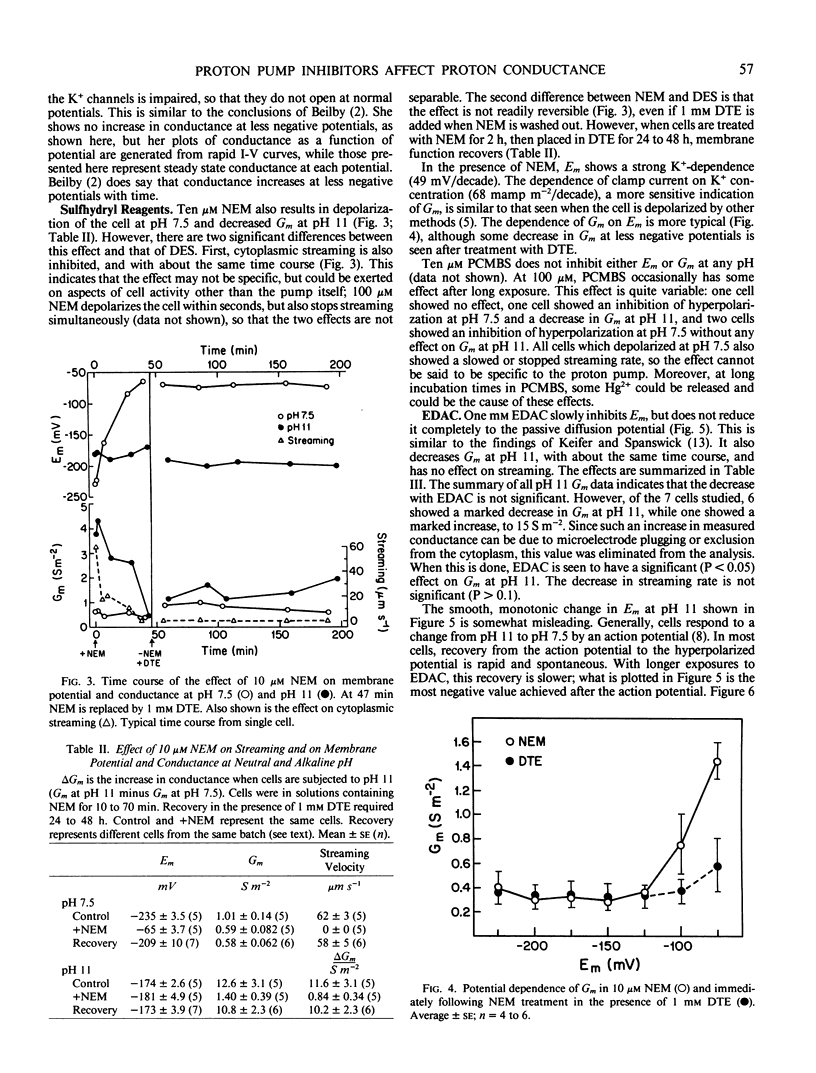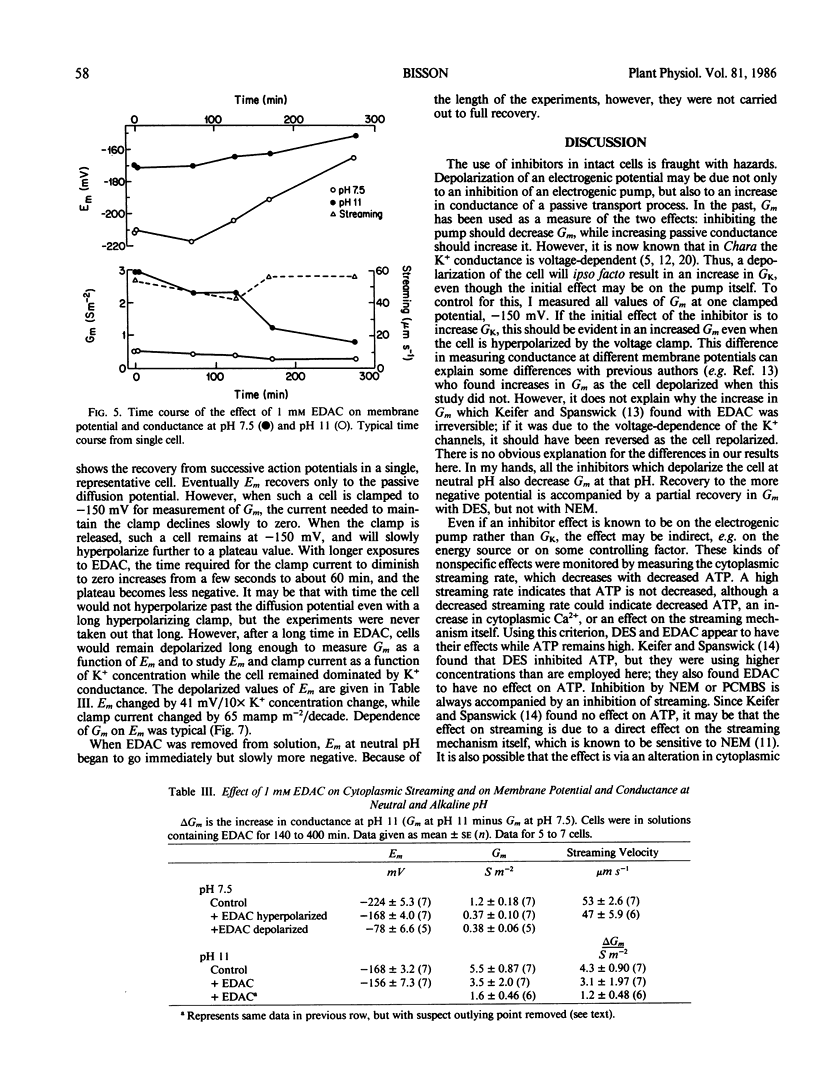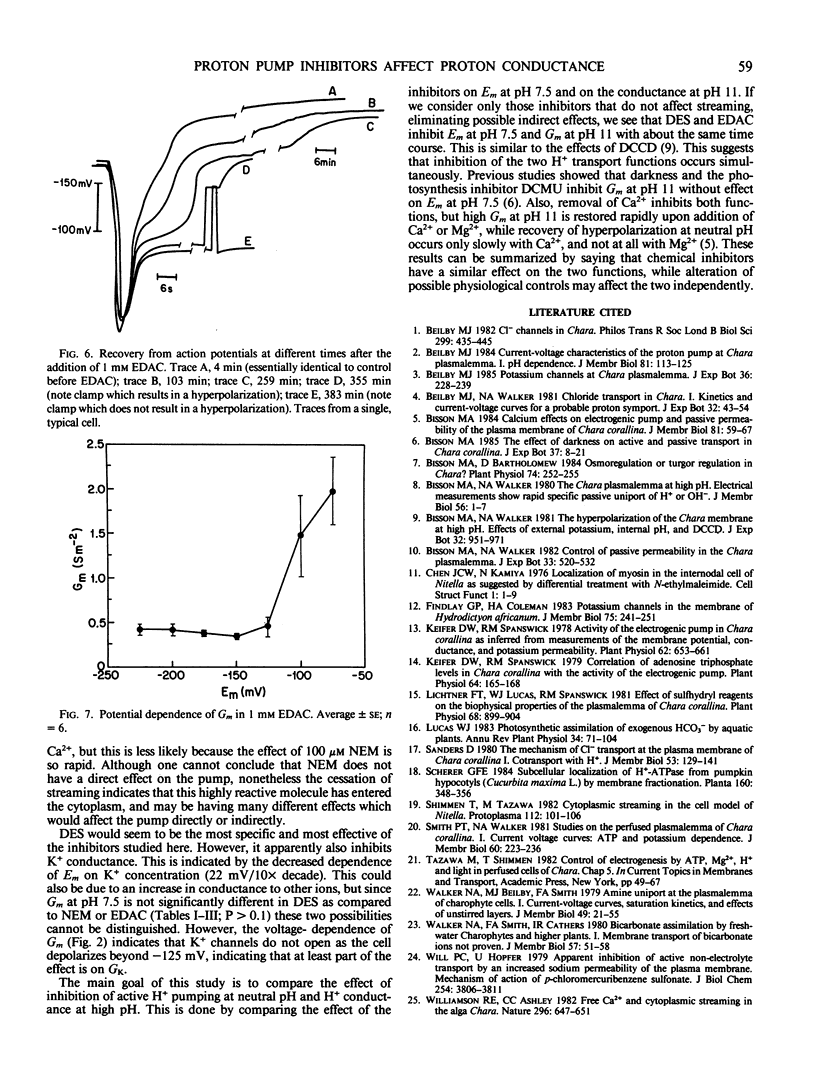Abstract
Reported inhibitors of the Characean plasmalemma proton pump were tested for their ability to inhibit the passive H+ conductance which develops in Chara corallina Klein ex Willd. at high pH. Diethylstilbestrol inhibits the proton pump and the passive H+ conductance with about the same time course, at concentrations that have no effect on cytoplasmic streaming. N-Ethylmaleimide, a sulfhydryl reagent which is small and relatively nonpolar, also inhibits both pumping and passive conductance of H+. However, it also inhibits cytoplasmic streaming with about the same time course, and therefore could not be considered a specific ATPase inhibitor. p-Chloromercuribenzene sulfonate (PCMBS), a sulfhydryl reagent which is large and charged and hence less able to penetrate the membrane, does not inhibit pumping or conductance at low concentration. At high concentration, PCMBS sometimes inhibits pumping without affecting H+ conductance, but since streaming is also inhibited, the effect on the pump cannot be said to be specific. 1-Ethyl-3-(3-dimethylaminopropyl)carbodiimide, a water soluble carbodiimide, weakly inhibits both pump and conductance, apparently specifically.
Full text
PDF




Selected References
These references are in PubMed. This may not be the complete list of references from this article.
- Bisson M. A., Bartholomew D. Osmoregulation or turgor regulation in chara? Plant Physiol. 1984 Feb;74(2):252–255. doi: 10.1104/pp.74.2.252. [DOI] [PMC free article] [PubMed] [Google Scholar]
- Bisson M. A. Calcium effects on electrogenic pump and passive permeability of the plasma membrane of Chara corallina. J Membr Biol. 1984;81(1):59–67. doi: 10.1007/BF01868810. [DOI] [PubMed] [Google Scholar]
- Keifer D. W., Spanswick R. M. Activity of the Electrogenic Pump in Chara corallina as Inferred from Measurements of the Membrane Potential, Conductance, and Potassium Permeability. Plant Physiol. 1978 Oct;62(4):653–661. doi: 10.1104/pp.62.4.653. [DOI] [PMC free article] [PubMed] [Google Scholar]
- Keifer D. W., Spanswick R. M. Correlation of Adenosine Triphosphate Levels in Chara corallina with the Activity of the Electrogenic Pump. Plant Physiol. 1979 Aug;64(2):165–168. doi: 10.1104/pp.64.2.165. [DOI] [PMC free article] [PubMed] [Google Scholar]
- Lichtner F. T., Lucas W. J., Spanswick R. M. Effect of Sulfhydryl Reagents on the Biophysical Properties of the Plasmalemma of Chara corallina. Plant Physiol. 1981 Oct;68(4):899–904. doi: 10.1104/pp.68.4.899. [DOI] [PMC free article] [PubMed] [Google Scholar]
- Will P. C., Hopfer U. Apparent inhibition of active non-electrolyte transport by an increased sodium permeability of the plasma membrane. Mechanism of action of p-chloromercuribenzene sulfonate. J Biol Chem. 1979 May 25;254(10):3806–3811. [PubMed] [Google Scholar]
- Williamson R. E., Ashley C. C. Free Ca2+ and cytoplasmic streaming in the alga Chara. Nature. 1982 Apr 15;296(5858):647–650. doi: 10.1038/296647a0. [DOI] [PubMed] [Google Scholar]


